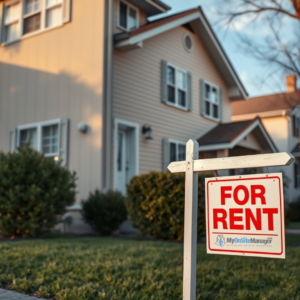
When it comes to the cost of living in the U.S., cities like San Francisco and Los Angeles often come to mind as some of the most expensive places to rent. However, a new study has revealed that New York State, as a whole, has now surpassed Hawaii and California as the most expensive state for renters.
According to research from Cinch Home Services, New Yorkers are spending an average of 34% of their income on rent, making it the priciest state for tenants. This figure edges out Hawaii, where renters allocate 33.83% of their income to housing, and California, where 30.98% of earnings go toward rent.
The Rising Cost of Rent in New York
The rental market in New York has been on an upward trajectory for several years, and it has only accelerated in the post-pandemic era. For example, in the Utica-Rome region, the average monthly rent for a studio apartment was just $556 in 2019. By 2022, this number had risen to $676, and as of 2025, it now stands at $922—a staggering increase of nearly 66% in just six years.
While upstate New York has seen steady rent hikes, it’s the downstate areas—particularly New York City, Long Island, and the Hudson Valley—that contribute most to the state’s ranking as the most expensive for renters.
In some of the most expensive areas:
- The Nassau-Suffolk region (Long Island) sees studio apartment rents averaging $1,240 per month.
- In New York City, the average studio rental has now climbed to $1,559 per month.
- The median rent in Manhattan has surged beyond $4,000 for a one-bedroom apartment.
Why Are Rents So High?
Several factors contribute to New York’s sky-high rental costs:
1. High Demand, Limited Supply
New York City and surrounding areas continue to attract job seekers, students, and professionals from around the world. However, housing development has not kept pace with demand, leading to a competitive and costly rental market.
2. Pandemic-Era Trends & Remote Work
While some predicted that the shift to remote work would drive people out of expensive cities, it has instead led to increased rental demand in suburban areas like Westchester, Long Island, and parts of Upstate New York. Many former city dwellers relocated to these regions, increasing competition for rental properties.
3. Rising Inflation & Property Costs
Inflation and increasing property values have made it more expensive for landlords to maintain properties, leading to higher rental prices for tenants.
4. Strict Rent Control & Housing Regulations
New York’s strict rent control and stabilization laws make it difficult for developers to profitably build affordable housing, reducing the supply of new apartments while demand continues to grow.
The Growing Affordability Crisis
The dramatic rise in rent prices highlights a growing issue—wages are not keeping up with the cost of housing. In New York, the minimum wage recently increased to $16 per hour, but that’s still far from enough to afford even a modest apartment in many areas.
Housing advocates are calling for more investment in affordable housing initiatives, rent subsidies, and zoning reforms to encourage the construction of new rental units.
What’s Next for Renters in New York?
For those looking to rent in New York, affordability is becoming an increasing challenge. Some renters are moving further away from major metro areas, while others are downsizing or seeking roommates to offset costs.
At the same time, policymakers are exploring solutions to expand affordable housing and protect tenants from extreme rent hikes. Whether these efforts will be enough to curb rising costs remains to be seen.
One thing is certain: New York’s rental market is showing no signs of slowing down—and for many, securing an affordable place to live in the Empire State is more difficult than ever.
Source:
